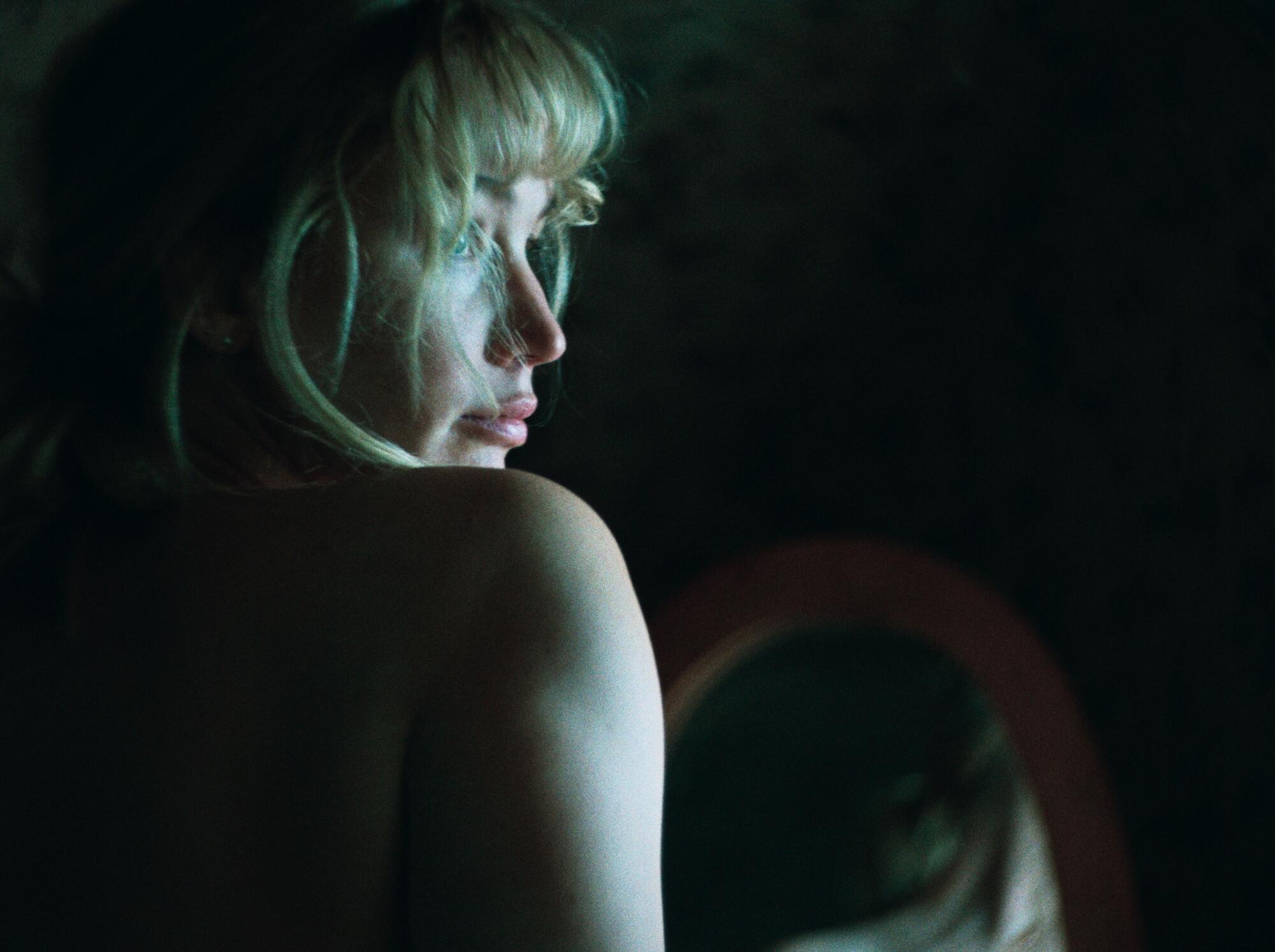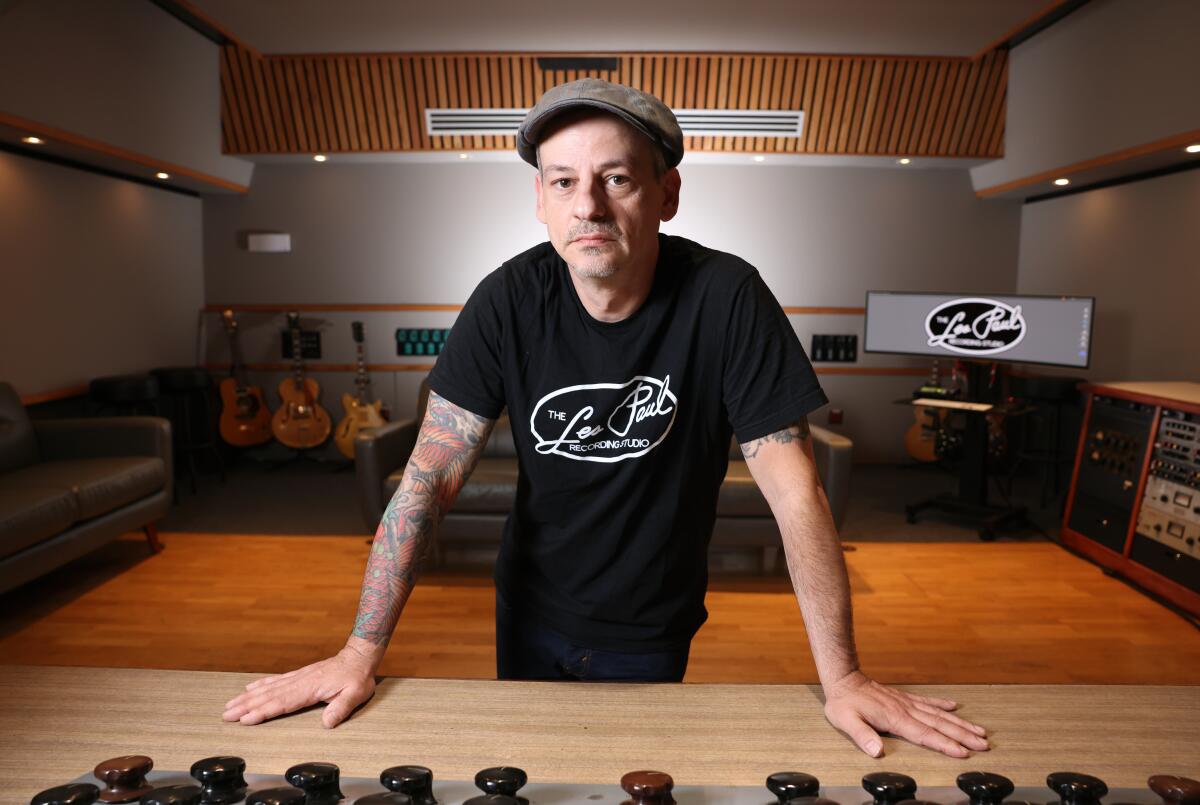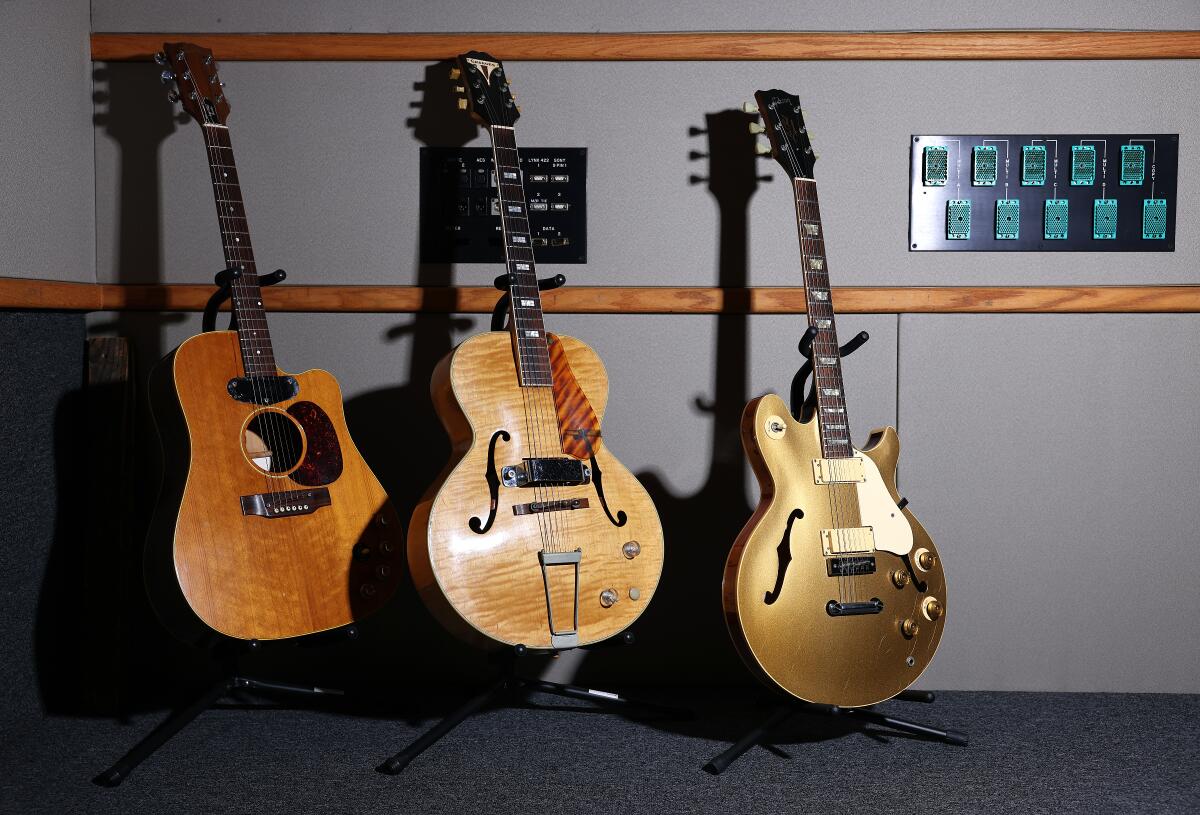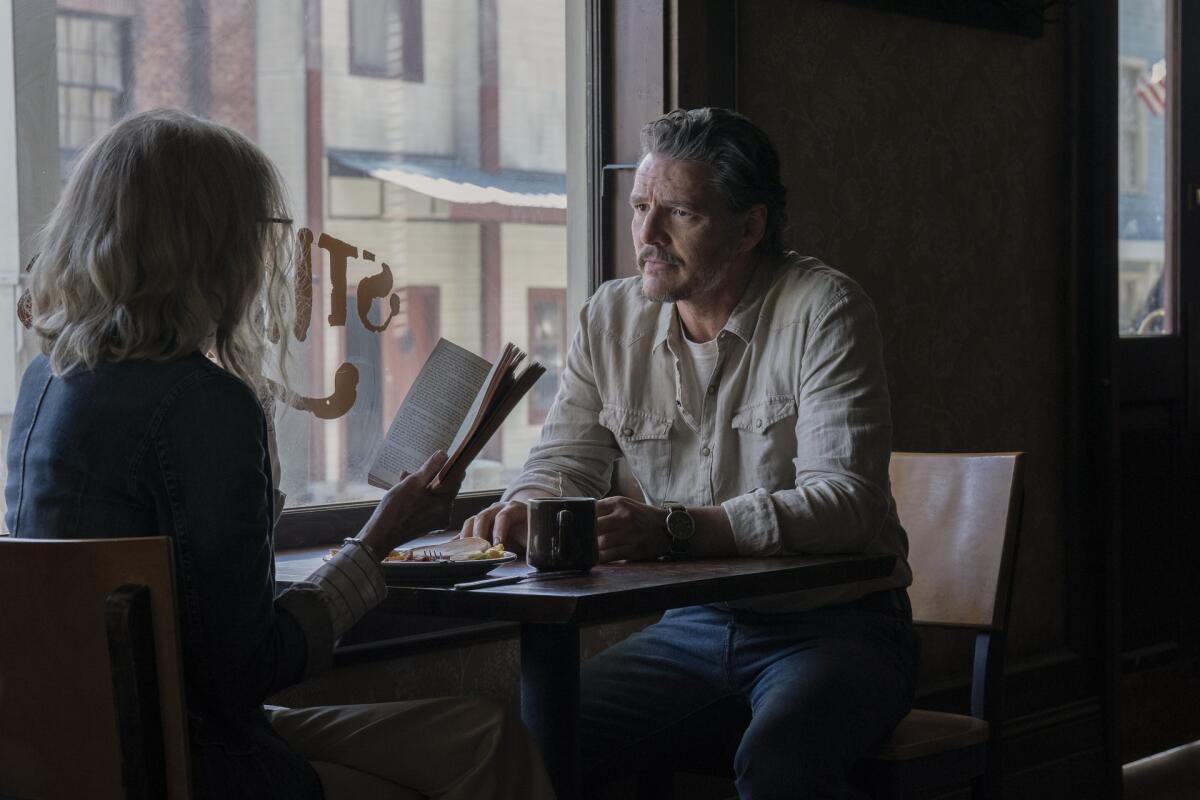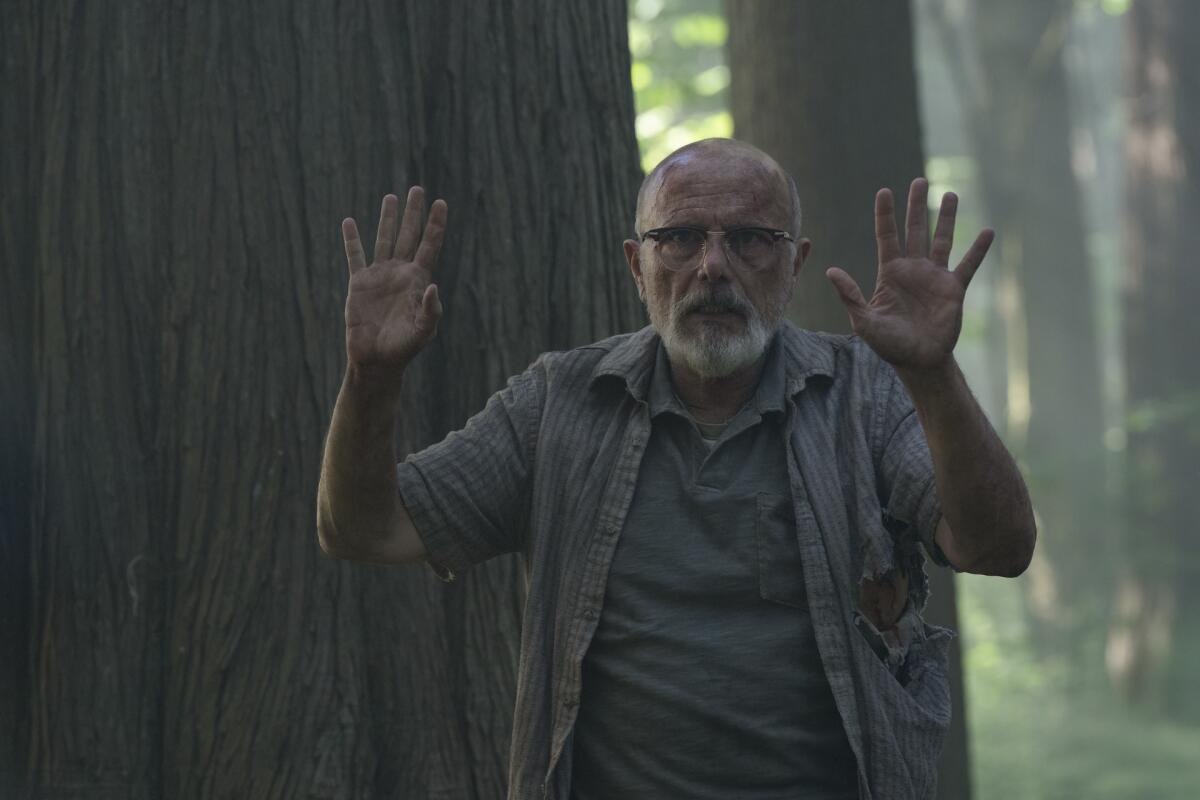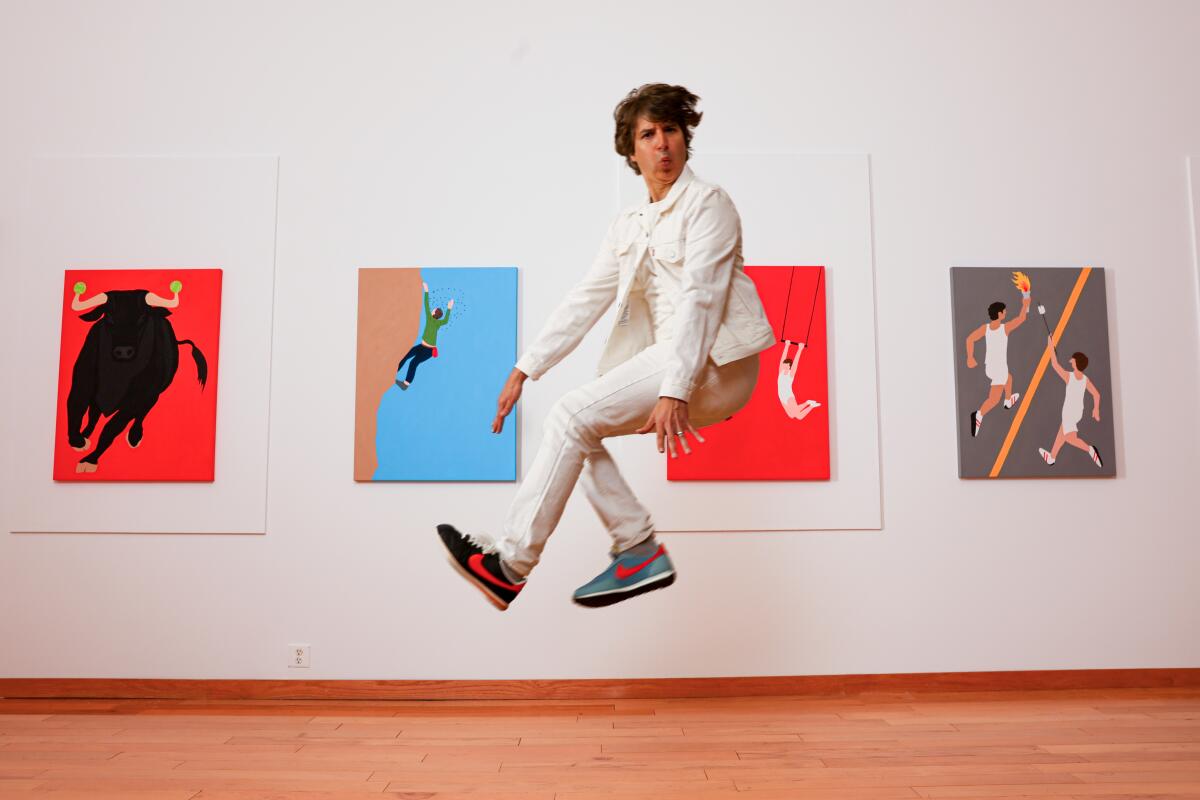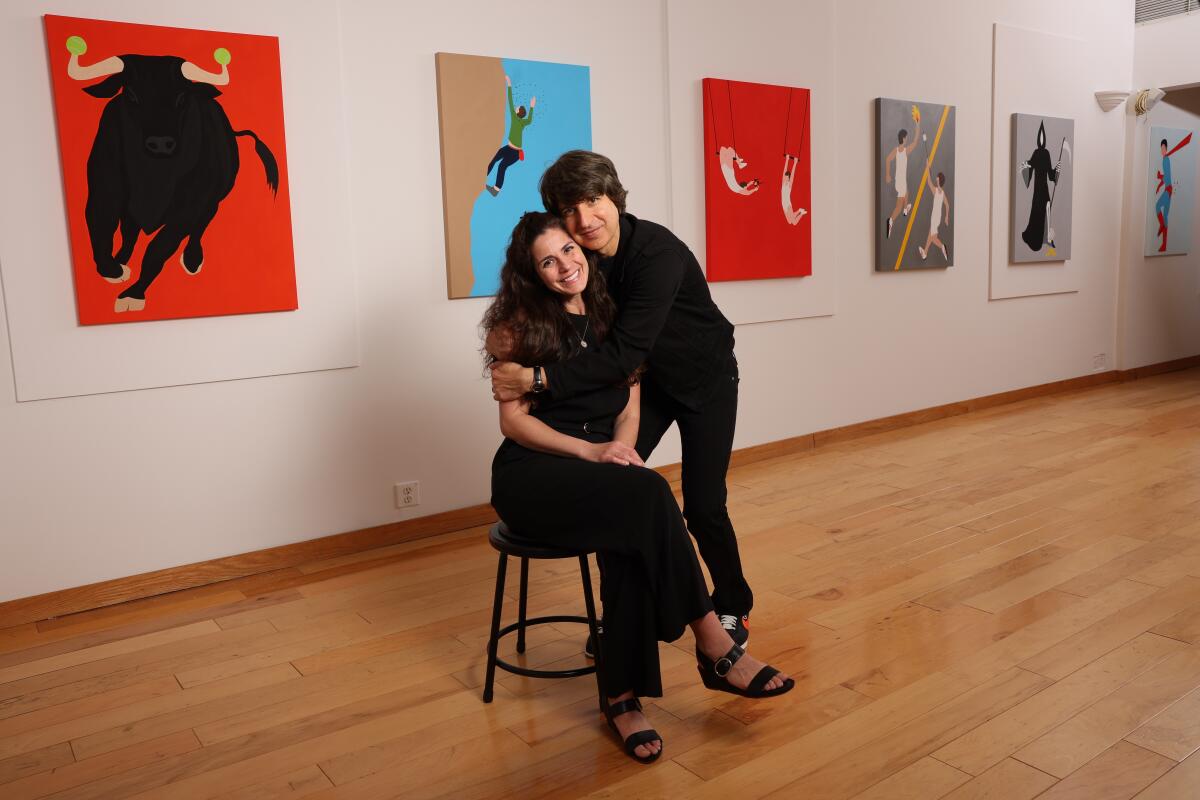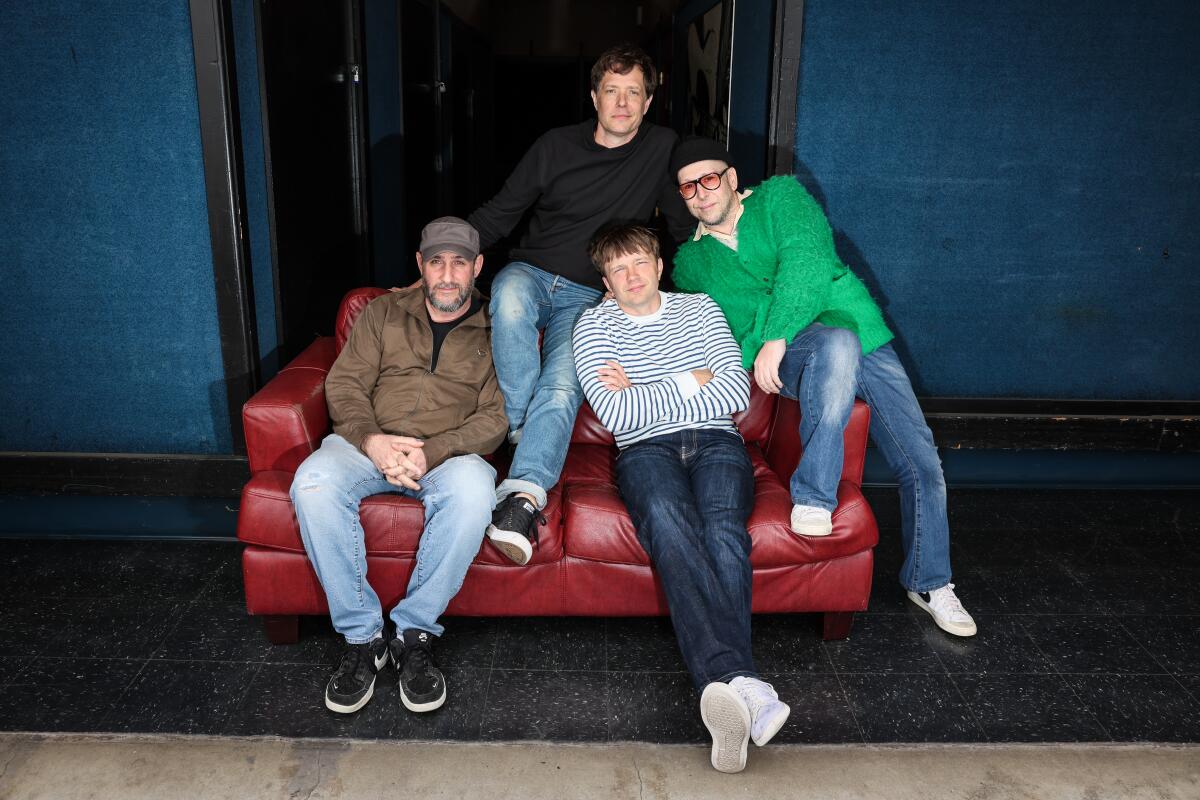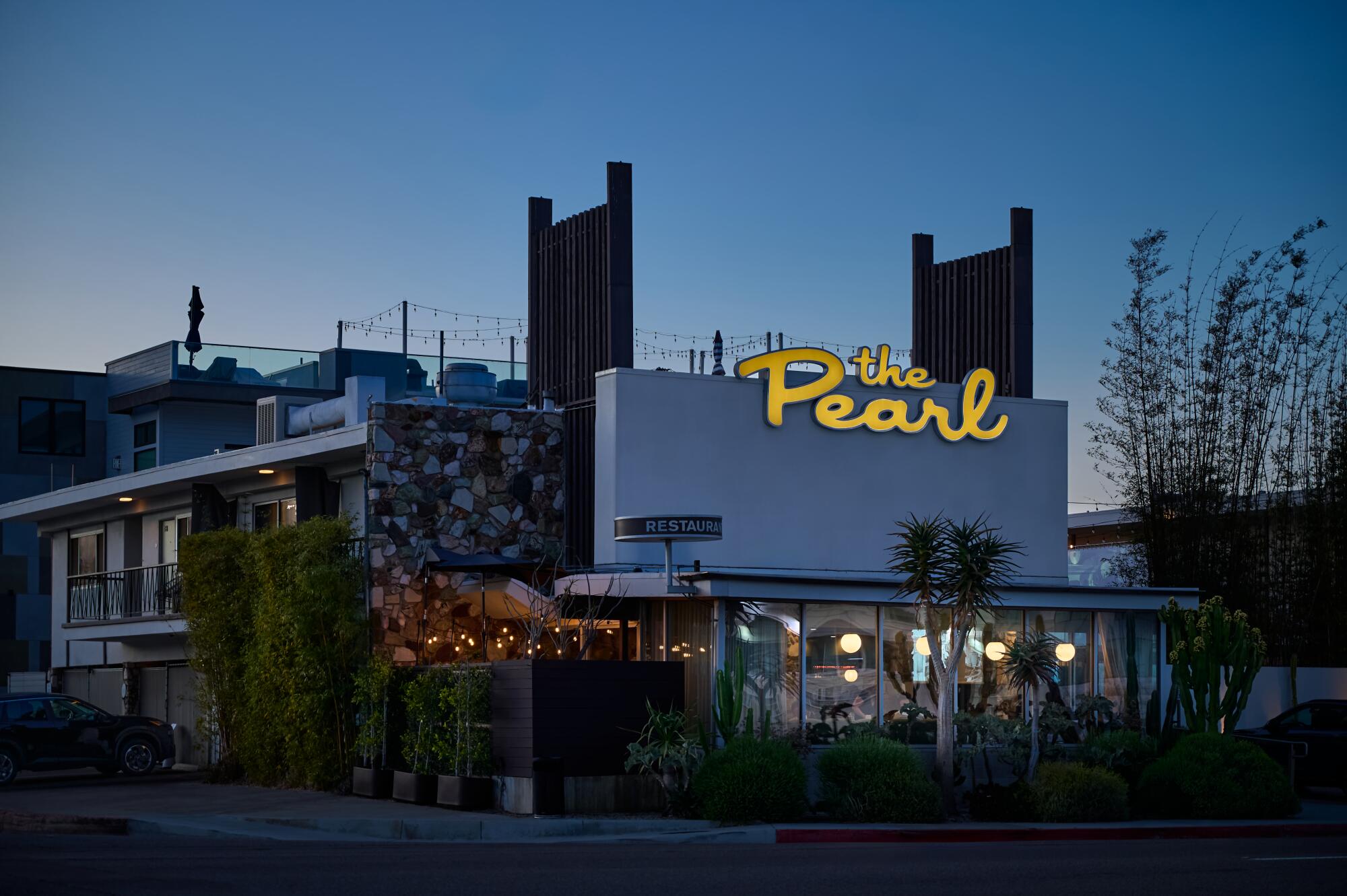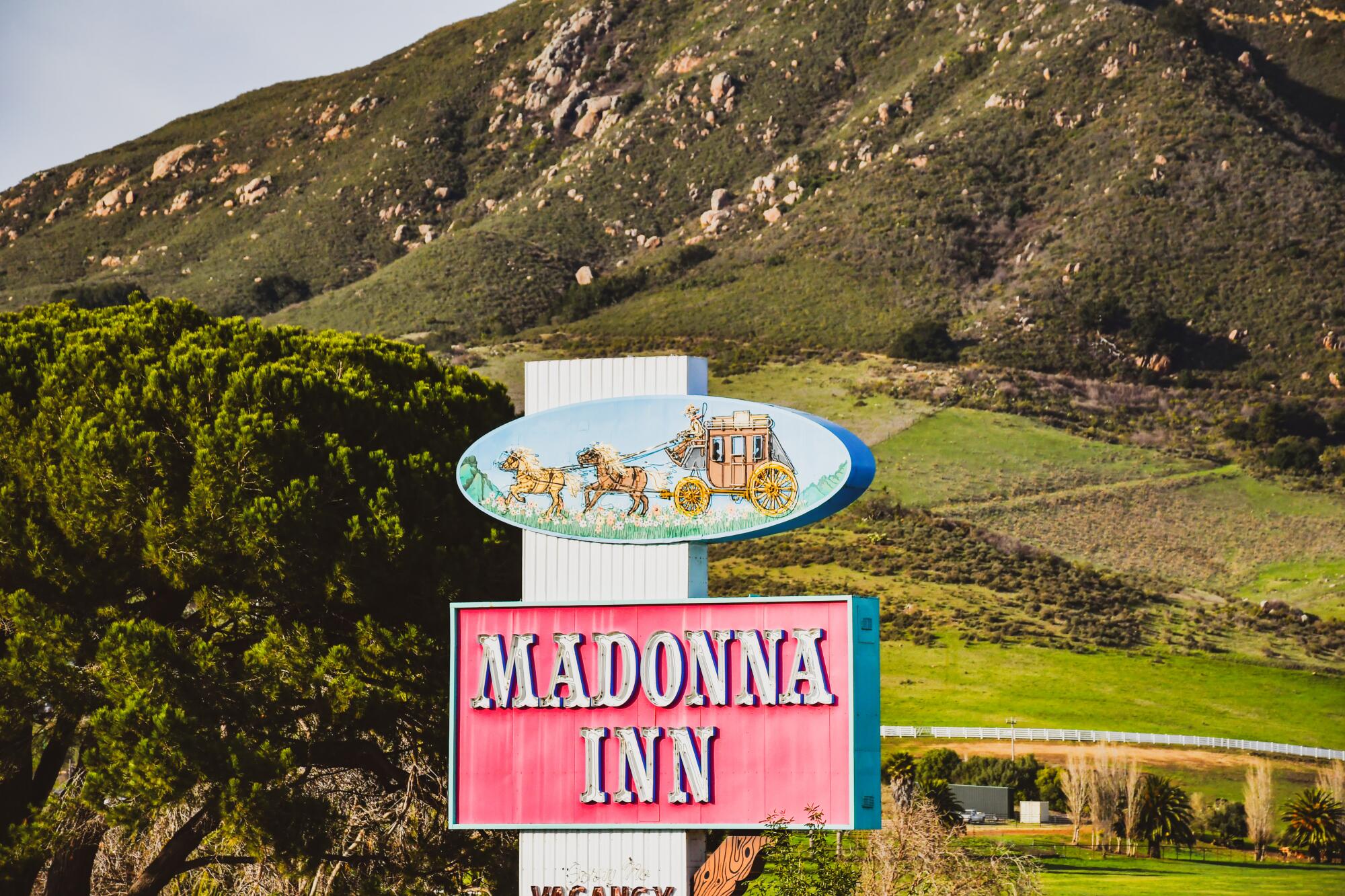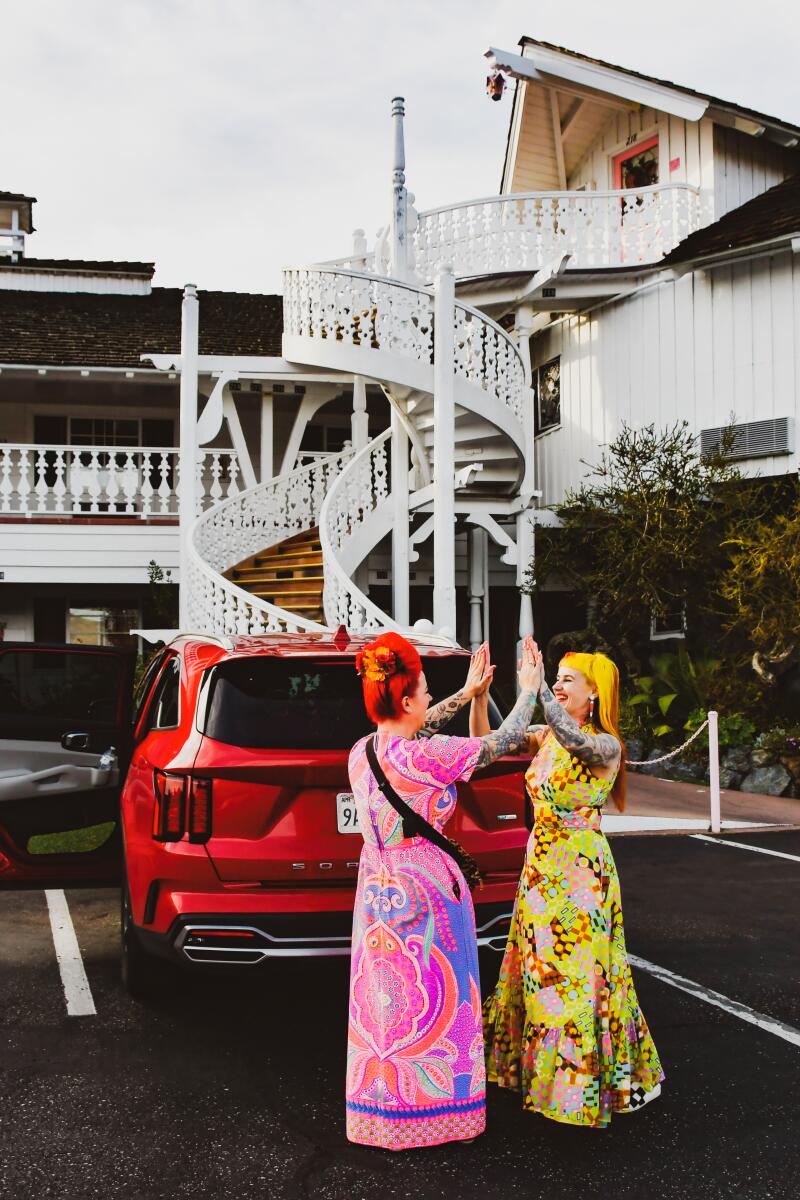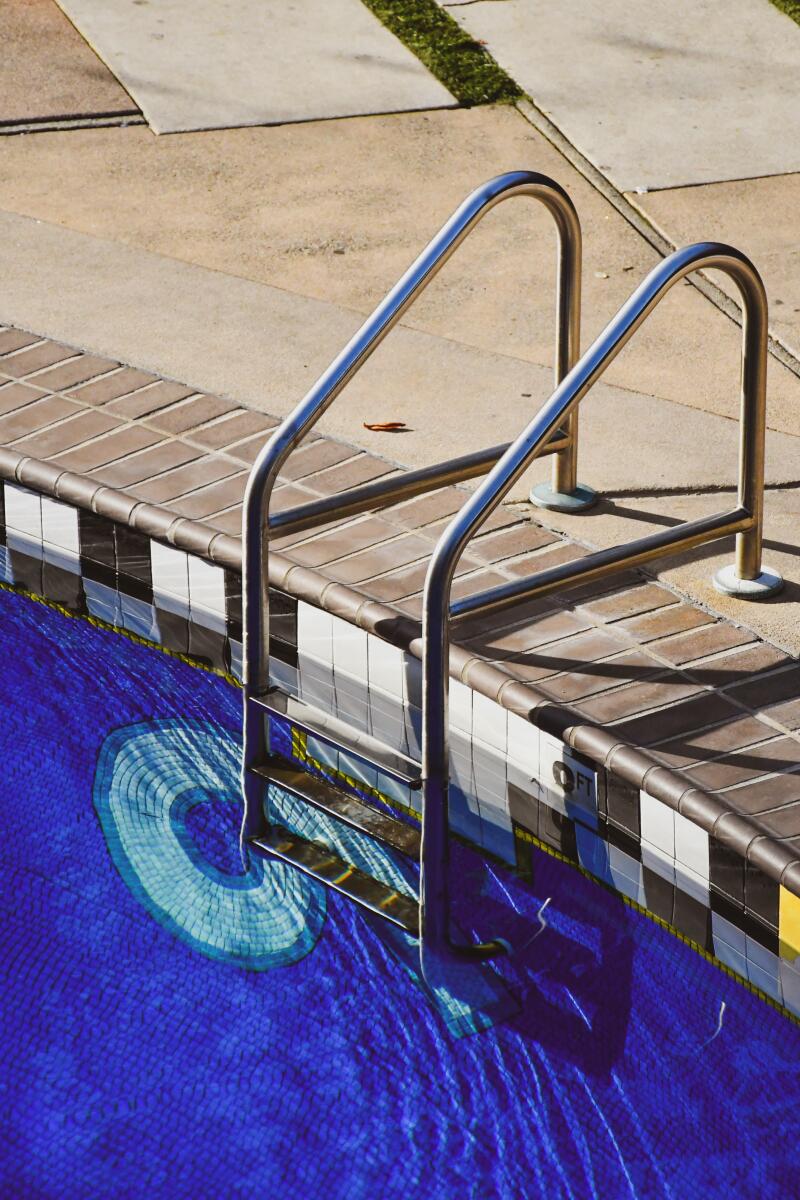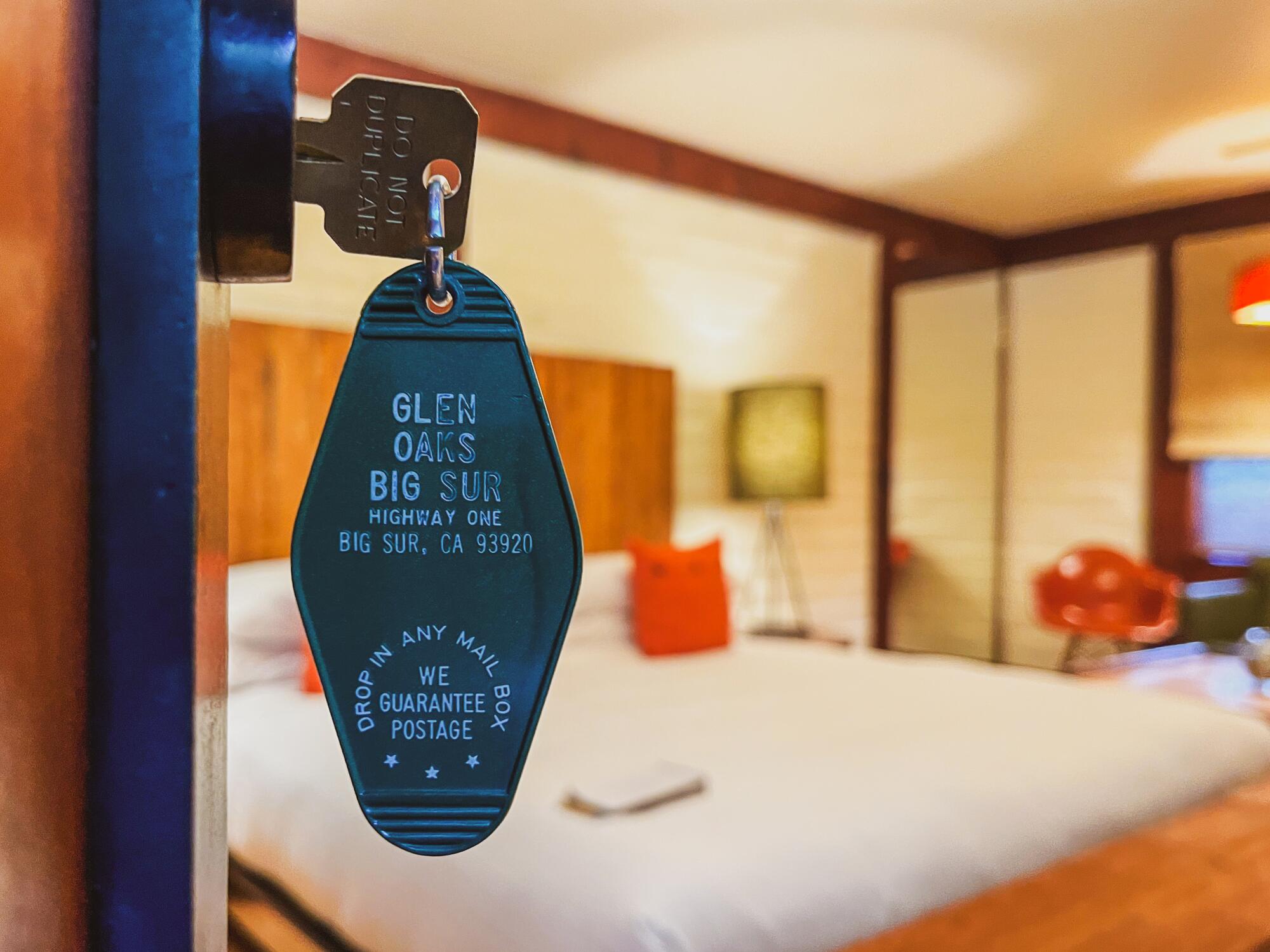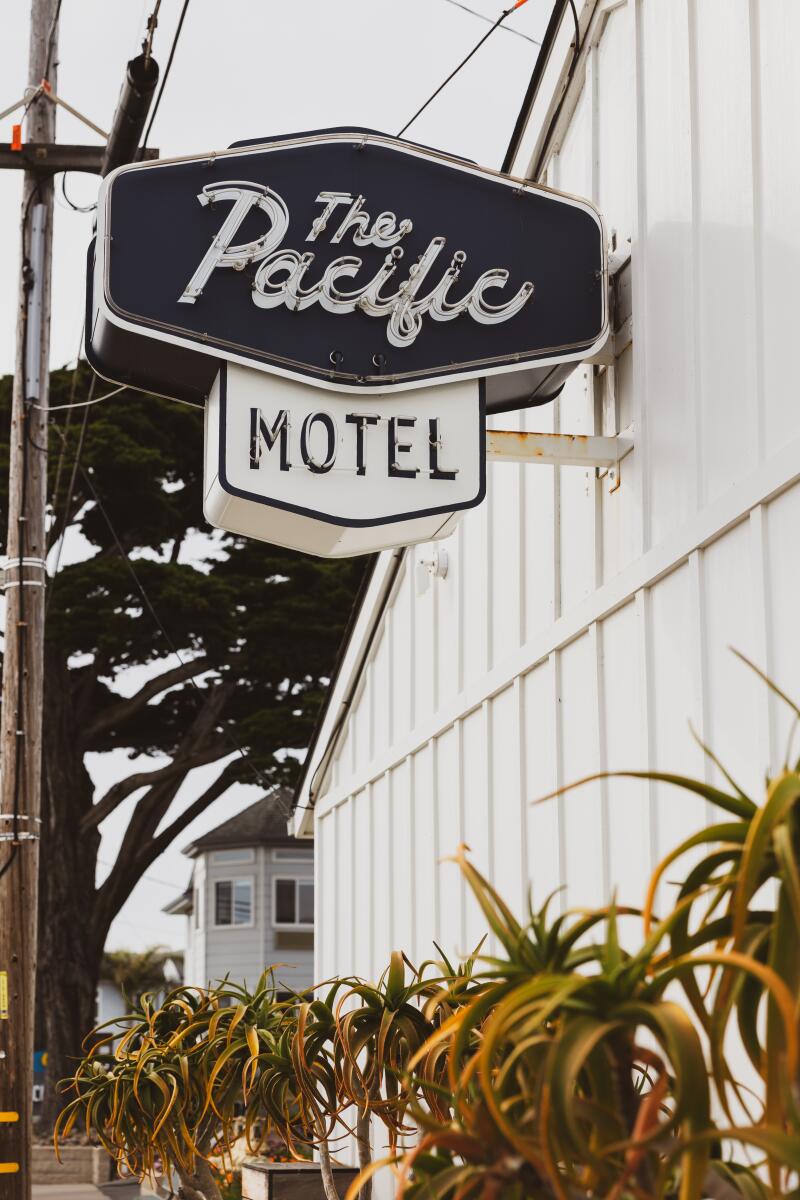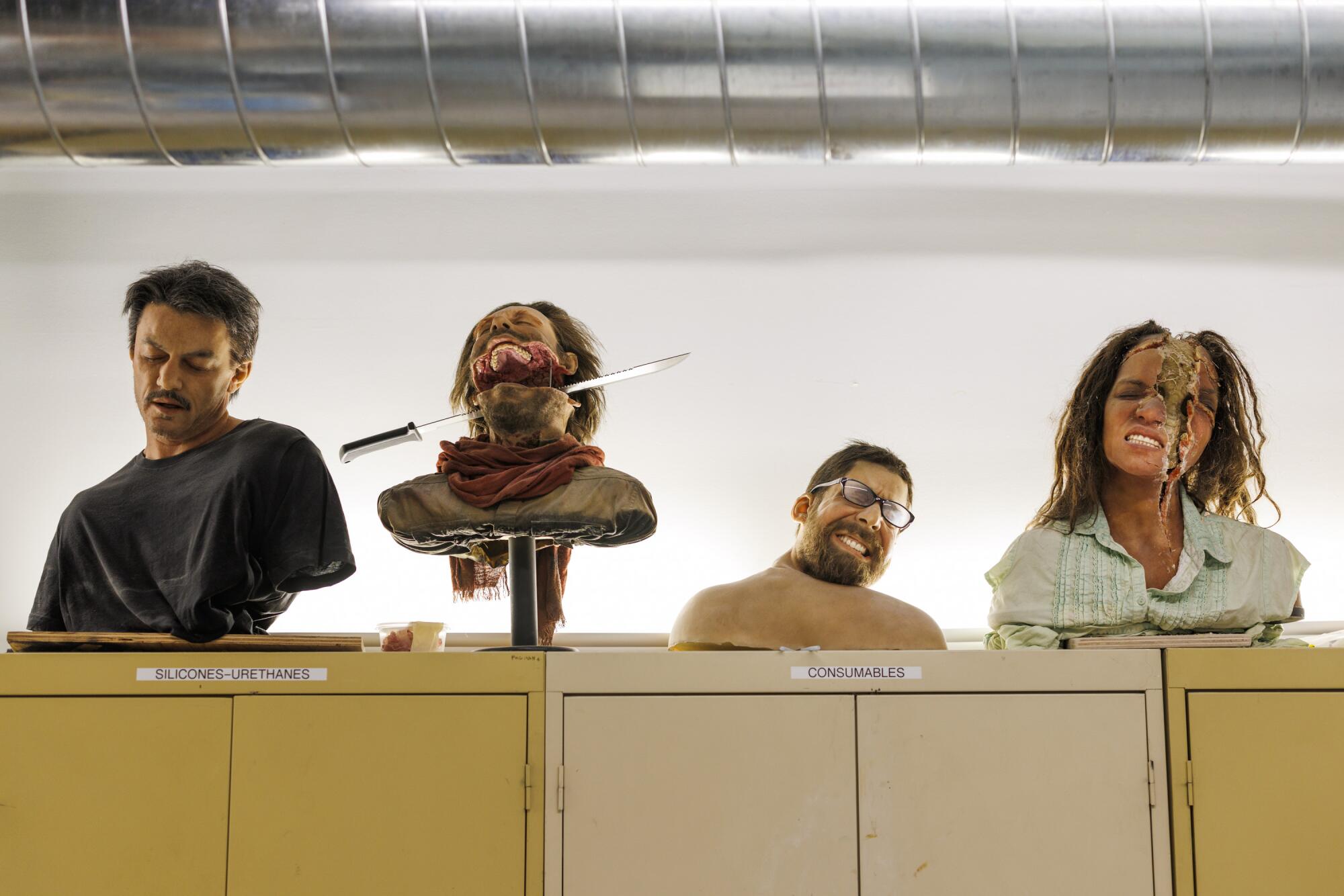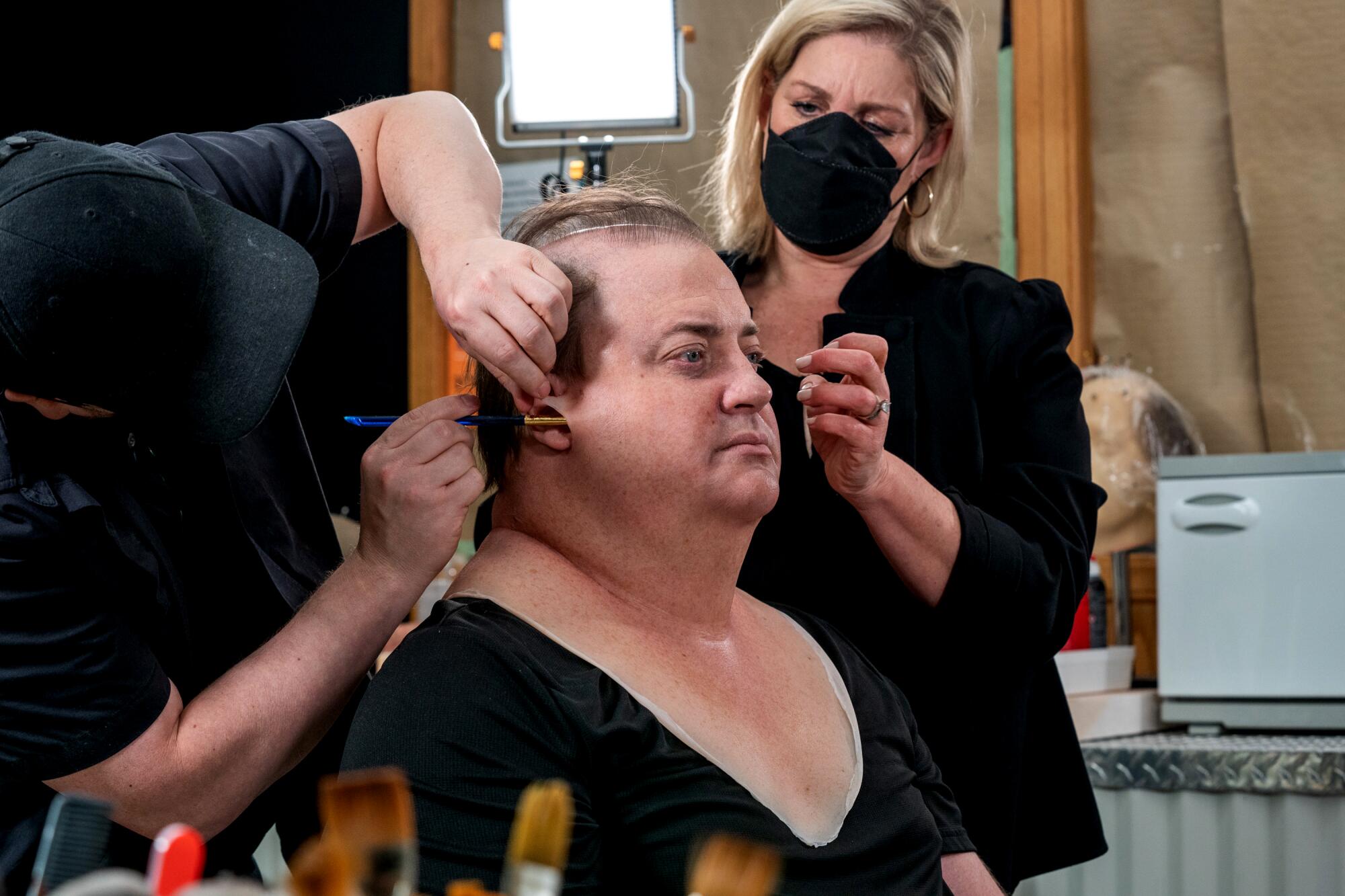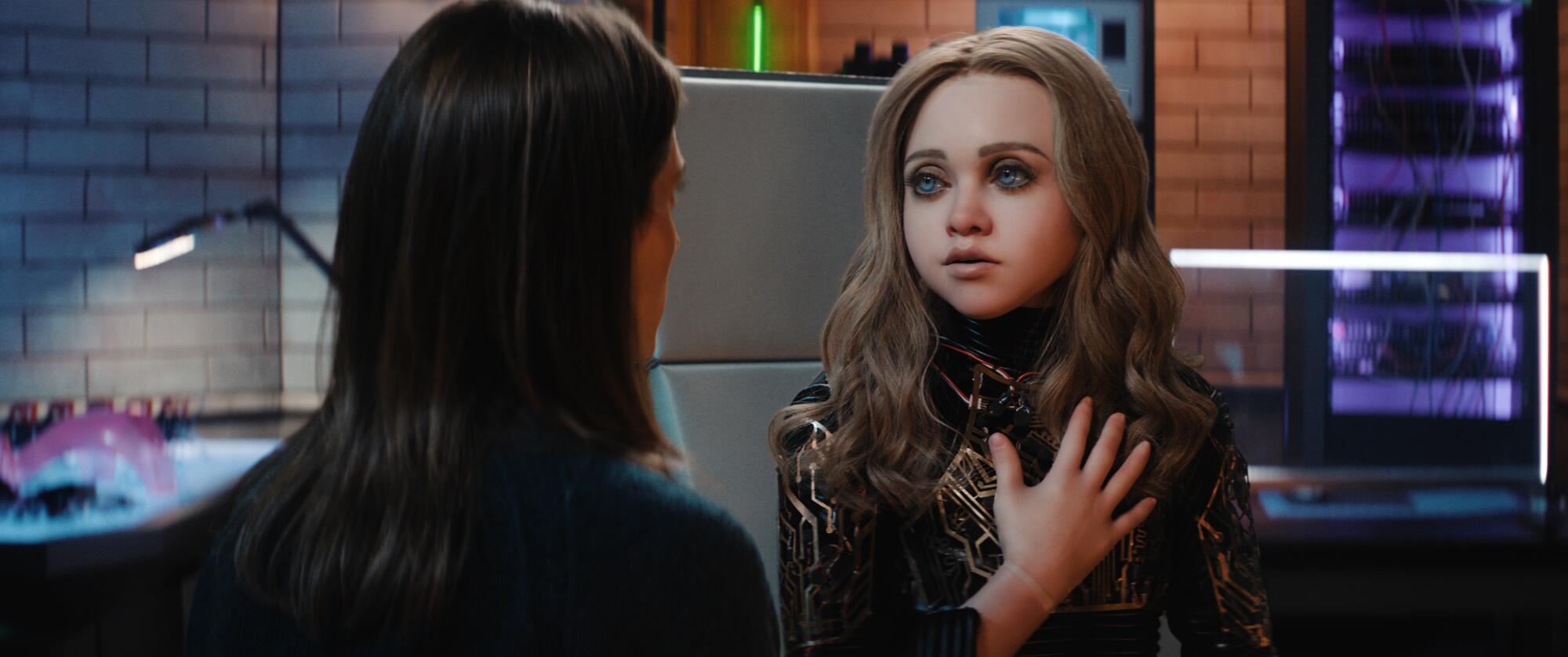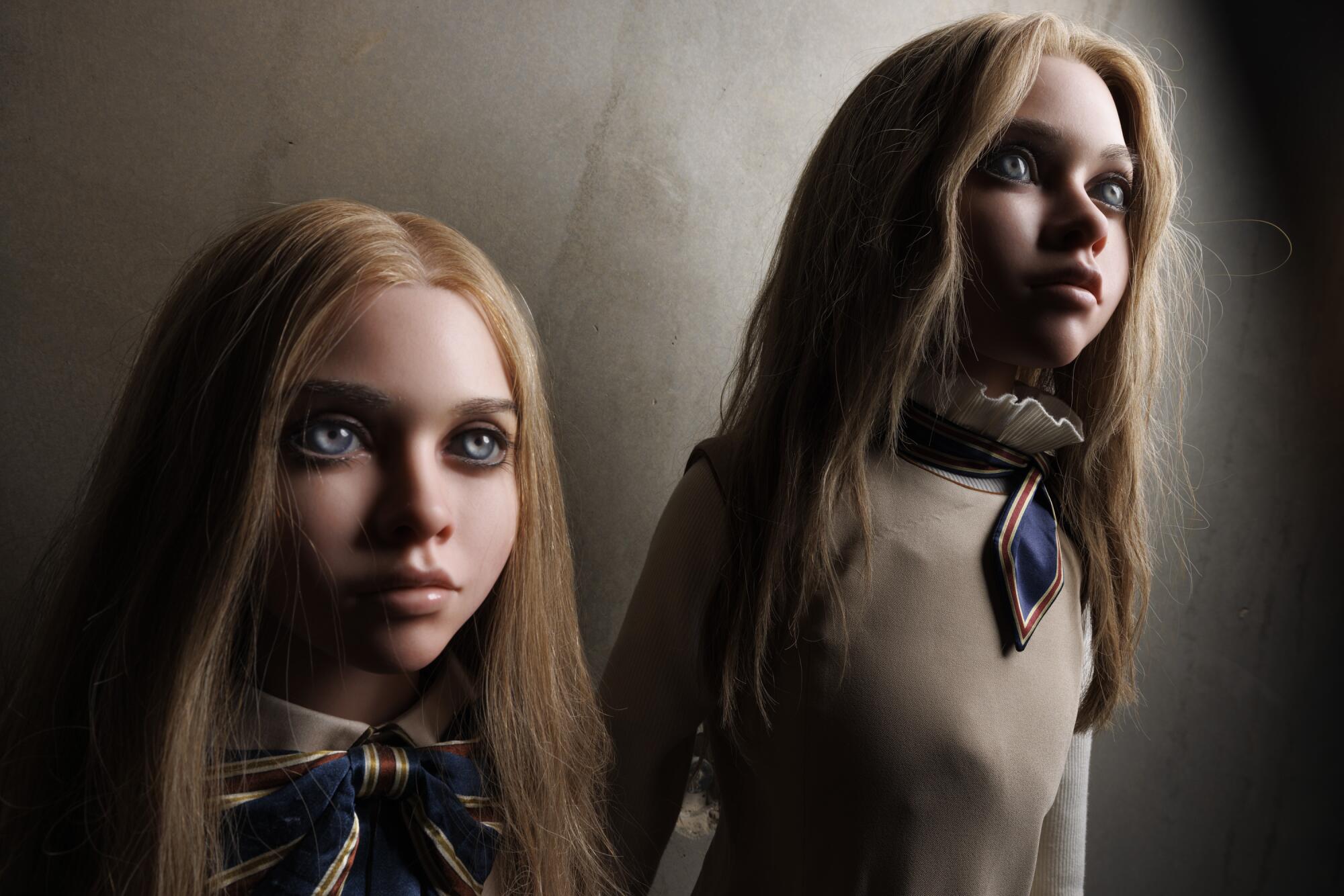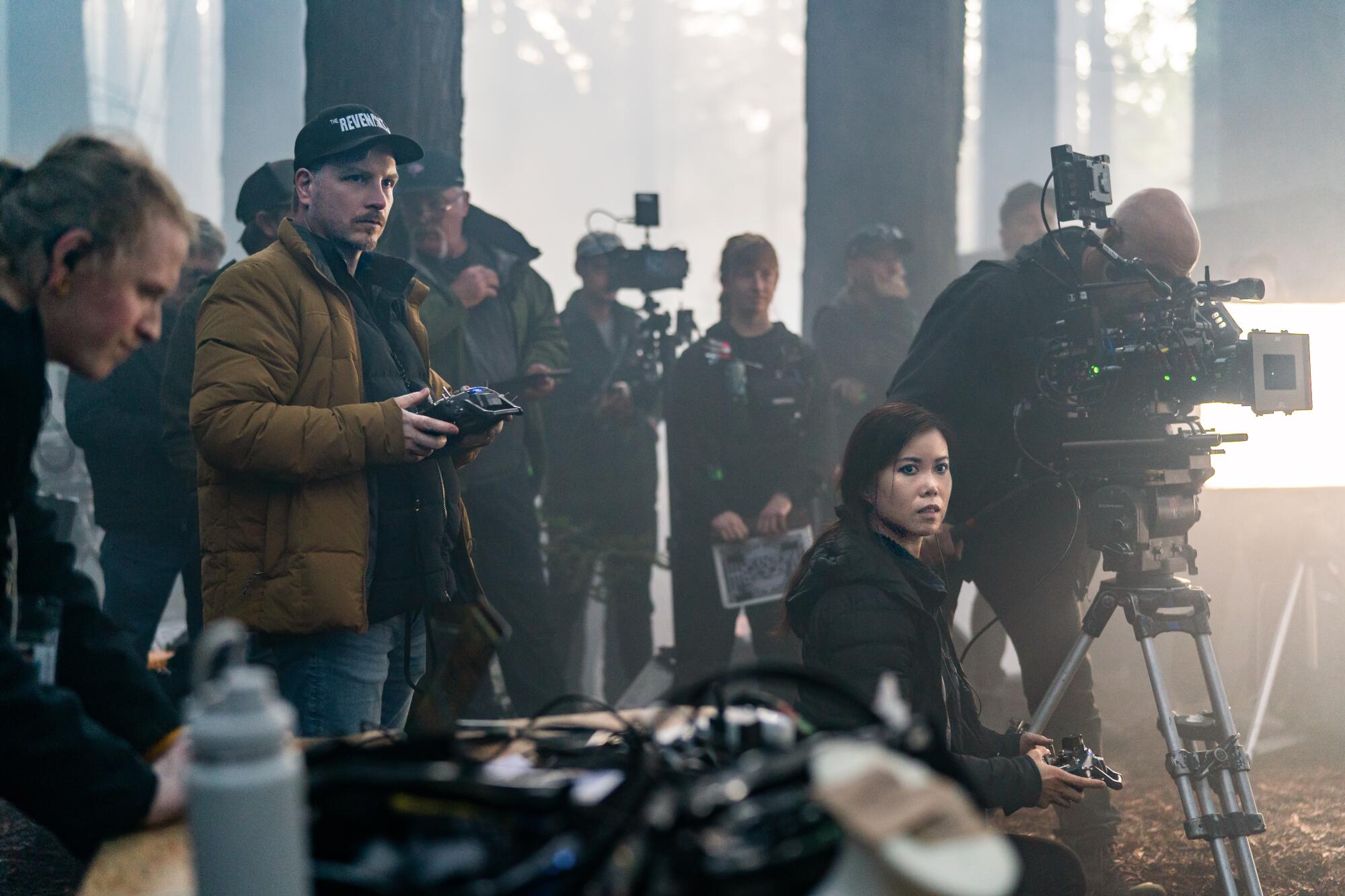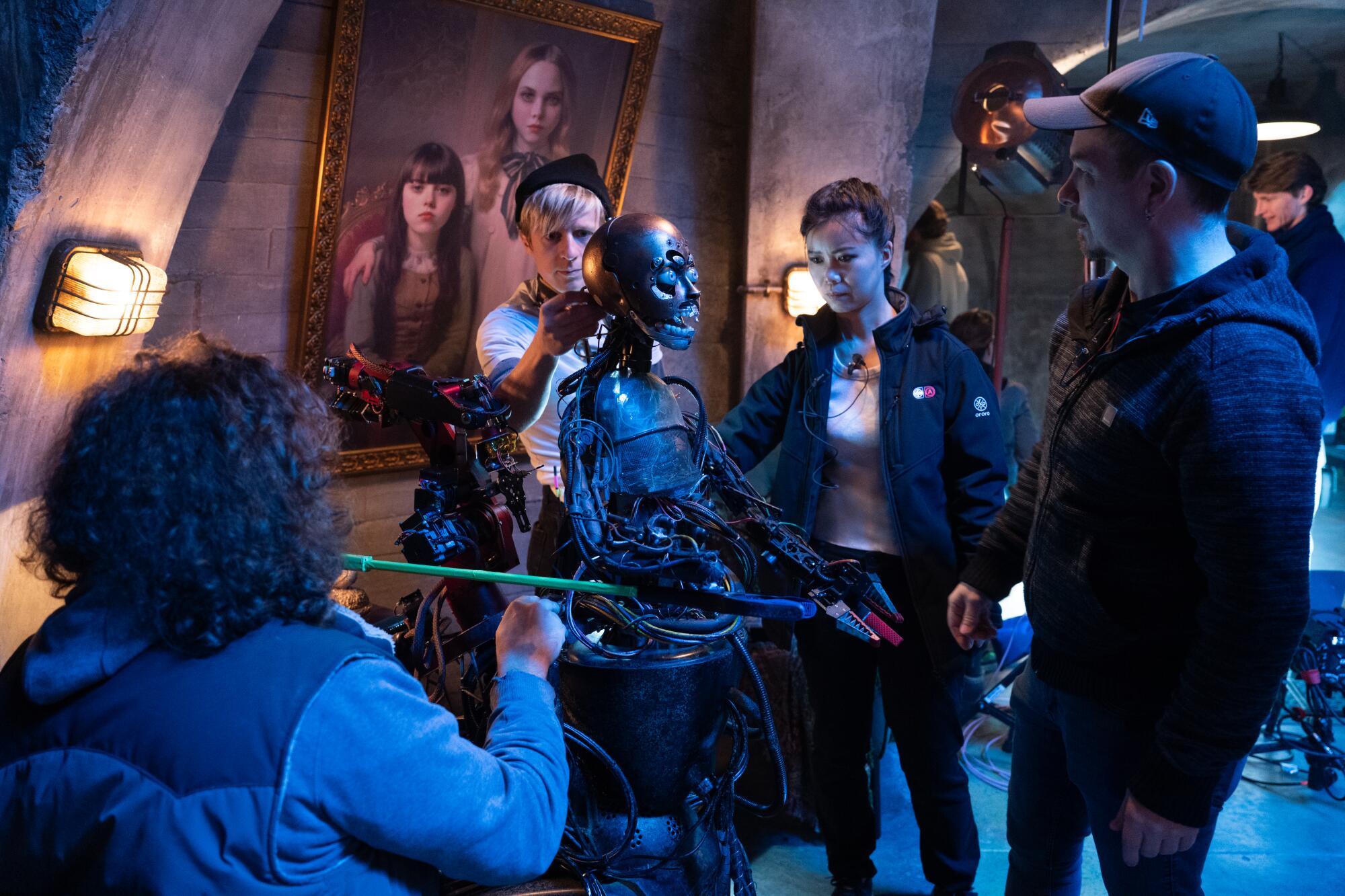Cannes 2025: Lynne Ramsay on her fiery return with ‘Die, My Love’
CANNES, France — You see and hear the films of Scottish-born Lynne Ramsay long after you first take them in. They have a way of burning into your brain. Sometimes it’s a question of immersive soundscapes or settings, as with her brutal 1999 debut “Ratcatcher” or the euphoric post-boyfriend girls’ trip “Morvern Callar.” Elsewhere Ramsay makes violence grippingly personal, as with 2011’s “We Need to Talk About Kevin,” about the dissociating mother of a school shooter, or 2017’s “You Were Never Really Here,” a coiled revenge tale spurred by a kidnapping.
It’s good that we remember these movies so well because Ramsay’s output has never been steady. She’s had some bad luck with turnarounds and fickle producers (notoriously on the projects “The Lovely Bones” and “Jane Got a Gun,” which swallowed up years).
But today, sitting in the sunlight garden of a quiet Cannes hotel blocks from the action, Ramsay smokes and sips coffee contentedly. Her latest movie, “Die, My Love,” a marital psychodrama starring an impressively unhinged Jennifer Lawrence, has just hours earlier been acquired by Mubi, the upstart distributor that released last year’s “The Substance,” in a deal reported at $24 million.
It’s a cheering turn of events for a director who inspires devotion not only from critics and A-listers such as Tilda Swinton and Joaquin Phoenix, but from a generation of young filmmakers who see in her work a defiant, punkish way forward, especially for women in artistic control. We spoke to the 55-year-old Ramsay about her process and making “Die, My Love.”
I was very happy to hear you had a film at Cannes. It’s such a rare thing.
Hopefully less rare now.
So let me ask you directly about that and I hope you take this in the right spirit: Do you wish you’d made more films by now?
Oh, yeah. There was one I was just about to shoot called “Stone Mattress,” based on Margaret Atwood’s novel, a little short story in a novella. We were just about to do that. But the producers were pushing for Iceland as a location — it’s meant to be in the Arctic. I wanted Greenland. It just felt like we were cutting the lines down. The actor, Julianne Moore, would do a couple of lines in one location, fly four hours and do the rest of the scene.
And I just don’t work like that. I can’t do it all broken up in pieces and it’s not good for the actors either. So I was like, I don’t think this is the right thing. And then I was like, maybe I should have just done it. But I’ve written a lot. I’ve got three scripts, one that’s totally ready, one that’s almost ready and then another that’s in development.
I think people really want to know from your point of view: Are you just uncompromising or especially picky?
I don’t know. I was speaking to my friend Jonathan Glazer about that. Everyone says to him, “Why don’t you make many films?”
It was basically 10 years between “Under the Skin” and “The Zone of Interest.” He’s going to disappear now for another 10 years.
I don’t know if he will. We were both talking, like, We’re not getting any younger. We’ve got to hurry up. [Laughs.] But yeah, no, it’s not by design. It’s just life takes over. I have a daughter, there was COVID, stuff nearly gets there and falls through. It’s just a tough industry. I am picky in the sense that if you’re going to stick with a project for two or three years, then you want to know that you’re doing the right one. You don’t want to be down the line with it and think, God, I wish I hadn’t started this.

Jennifer Lawrence in the movie “Die, My Love.”
(Festival de Cannes)
Meanwhile, it must be exciting when a star like Jennifer Lawrence reaches out to you about a film you made 25 years ago, as she did about “Ratcatcher.”
Well, it was funny. She said she wanted to work with me. That was nice. She was talking about this particular book [“Die My Love” by Ariana Harwicz] and I was like: Look, I’ve just done “Kevin.” I don’t want to do more postpartum things and I won’t do that. And then I think I was doing “Stone Mattress” for a while and I probably was just being terrible and didn’t get back for ages.
But then I was like, OK, I have an idea. If it’s a love story — a bonkers, crazy love story — if it’s got many layers to it, I’ll do it as an experiment. We’ll see how it goes. And then it kind of worked.
A postpartum story isn’t the whole picture. Neither is a love story.
Right. I suppose it’s a bit of a lot of things.
I know that you like mashing up genres. Do you still want to make a horror film, like you’ve said in the past?
I’m making a vampire movie.
Really?
Yeah. I can’t tell you much. It’s with Ezra Miller who was in “Kevin.” He’s the main character. That’s in development.
I feel like I may be waiting a while to see that one.
[Laughs] You won’t wait for 10 years. I don’t have 10 years. I’ve got to do it quicker than that. That’s what Jon [Glazer] said. We need to speed up. He’s one of my favorite filmmakers. And PTA as well.
How does it feel being at Cannes again?
Actually, this time I feel quite relaxed. I think the first time I came, I got quite nervous. You get really wound up. My husband was a musician and I remember squeezing his hand so hard at “Kevin,” he said, “You’re going to break my guitar hand.” People were coughing. It was a real Cannes audience — they’re pretty hardcore.
But now I feel quite relaxed because I like the film myself. Sometimes you’re super self-critical. I was watching it in that big theater and I’m going: Change that, change that. We’ve only been editing for four or five months and that’s not long. So we’re still tweaking it. I did a mix in five days.
When you’re working with actors such as Robert Pattinson and Jennifer Lawrence, they bring so much iconography. How do you strip that away and be like, I’ve got this piece of work that I want to do here?
I think they were very willing participants. There was a lot of trust. I try and create an atmosphere of trust and I just threw them into the fire. I did the sex scene on the first day. I thought it’s a risk. It’s either going to work or it’s going to be a disaster. But I could see there was chemistry. And when they arrived, I was getting them dancing. They were dancing together, synchronized. And it was fun. And then I think Robert was a little nervous, but then something just kind of broke the ice.
Doing a sex scene on the first day will break the ice, I imagine.
The first day I was scared. I was like, oh, my God, was this a good idea? But it actually was a good idea. Sometimes I’ve left those scenes for later and then it builds up so everyone’s gotten all nervous. You start this scene and they’re all thinking about it and overthinking it. So I just chucked them in the deep end.
Then there was a different scene, a longer one, and there was loads of dialogue and we only had a few hours — the light was going, maybe an hour-and-a-half left. And I saw the DP lying in the grass, Seamus McGarvey. And we both looked at each other and were like: There’s no way we’re going to finish this scene. There’s no way we can do it.
And we’re both lying in the grass and we look down at the grass and I look at him and I go, “Well, what if they’re like cats in the grass? Why don’t we just do it here?” So I’m running back to the bloody actors and I’m going, “Right, OK, we’re changing the whole scene, taking all the dialogue out. And you’re both cats. You’re both like cats.” And they’re both like, what the f—?
You just discovered that in the moment?
Yeah. Because we didn’t have the time and I’m really glad I did. And they were so trusting. Robert was like, “That was a good scene.” Then Jen went, “Yeah, I can see it.” It was all at breakneck speed. We shot it in an hour or something.

Lynne Ramsay on the set of “Die, My Love.”
(Kimberly French)
And you’re giving them an experience they will never have with a director who follows a plan to the letter.
Yeah. A film’s a film but a script is a script. I mean, it’s a different beast. You’ve got be able to throw things out if they don’t work or you don’t have time. So you go to think of something and often that’s better. But after that first day, I knew they thought, oh, God, what are we in for?
I’ve heard that Jennifer Lawrence was pregnant in real life at the time.
Yeah. I didn’t know that until about four weeks before [the shoot]. I think she was a bit nervous about telling me. I was like, “You OK about this?” I was worried. But she was glowing and was so happy to play crazy. And she was excited by the ideas. She was like, “Yeah, let’s do it.” She’s a punk, man.
Your vision of America is very interesting to me. It’s never super realistic so much as an amplified America from the point of view of someone outside it. What do you think about America these days?
Well, I wouldn’t want to live there right now, but I always loved America. I lived in New York for quite a long time when I was making “You Were Never Really Here,” when I was making “Kevin.” I’ve always loved New York. It’s got a crazy, wild energy. L.A. I find a bit more difficult. I feel it’s like “Mulholland Drive.” But there’s a beauty to it as well. The light is amazing.
Your Montana of “Die, My Love” is also unique, filled with local color but almost an abstract place where a marital unraveling can take center stage. What was important to you to emphasize, setting-wise?
We actually shot in Calgary but Montana’s just down. My backstory was that they lived in New York — he was trying to get in a band, it didn’t really happen for him, he was kind of a slacker. And she’s written a couple of things that got published. Now there’s this idea that they’ll have a new life, because the house is free and a lot of young couples, if they get something like that, they’re like: I moved because New York’s expensive. And then the house becomes its own entity, in a way. We shot the beginning already inside the house, not from the outside [going in], and for a reason: The house is looking at them. There were elements of “The Shining.”
I picked up on those. And when you have actors like Sissy Spacek and Nick Nolte as parents, they create a kind of gravity of their own. Were they familiar with your films like Jennifer Lawrence was?
No, I went to them because they both meant a lot to me growing up. My dad loved Nick. Since “Badlands,” I’ve loved Sissy Spacek, In the book, the mother-in-law’s kind of gone crazy, but she played it much more that she saw exactly what was happening.
When we first meet the main characters, we hear them telling each other the lies they’ve probably been saying for a while: I could really record my album here. You can write your Great American Novel. Do you think that they end up in a place that’s more truthful by the end of the film?
I had writer’s block as well for a while and I was like Jack Torrance in “The Shining” writing the same sentence again. Recutting it. You get stuck in things and then when you’ve got a baby as well, it’s much harder to do anything. Your life completely is turned upside down. So I think they’ve got all these aspirations: It’s going to be great and wow. And then she just feels really isolated and she’s stuck with a baby. And she’s bored and she’s just gone nuts. I suppose I did think about “Repulsion” and, of course “A Women Under the Influence” — that sort of tragedy where they love each other but don’t understand each other.
Do you ever feel trapped by the massive reputation of your early films?
I love when I rewatch them, like, 25 years later. I saw “Morvern Callar” with a young audience a year ago or something. A couple years ago, because the film was 20 years old, and it was really nice. It still played and they were all laughing and they really got it. I think that film was kind of dumped at the time because I think I pissed off the financiers. I wanted a different poster and I made a big deal about it — and I love the poster still. And they wanted something much more conventional.
The poster for that is so perfect, though. I still remember it. It’s flush with a kind of heat, an intimacy.
I kind of fought for that. They wanted something that looked like a Mexican western or something. It was nice. But I’ve still got that poster in my place in Scotland against a black wall, where it really pops. And these kids were really getting it — even though she’s got a Walkman, which is completely, I mean, a million years ago.
It’s a little dated, but it works. You captured something essential about Samantha Morton and now with Jennifer Lawrence too. Do you ever find yourself thinking in terms of awards or Oscars?
No, I gave that up a long time ago. In fact, my mom had all my BAFTAs, so I hadn’t seen those BAFTAs for ages. We were cleaning out her house. I gave all them away.
Were they in her closet or something?
No, she had a little cupboard that she just put them in, but I just kind of forgot about them.
She was proud of you.
Yeah, they were in a little glass cabinet and I forgot all about them. Then I got them back and it was weird.
Where is home? Is it still Scotland?
London, actually. And Scotland. I have a place in Scotland too, but my mom passed away quite recently — it was only a couple of weeks ago. So I had the funeral as well as filming and then it’s been quite a challenge.
Is she the one the film is dedicated to?
Yeah.
“Die, My Love” is very explicitly about motherhood. What do remember about your mother? What did she teach you, in terms of being an artist?
She taught me how to be a filmmaker, to be honest. She taught me to sit. I watched the best films when I was a kid and they thought I was deaf for a long time because I just ignored everybody else. It was a big noisy family. And I think she just showed me these cool films. Her big one was — I mean it sounds so random for me — but she loved “Imitation of Life.” She watched that a million times. “Mildred Pierce.” And “Vertigo.”
She taught you how to give yourself over to a film?
Yeah, she just loved movies and so did my dad. But my dad would be a bit more annoying because he’d tell you the end. He’d be like, “This is going to happen.” You know what I mean? And I’d be like, Dad! I wouldn’t watch it. But I think she was a really interesting smart woman. Not from a film background. They were working-class people, blue-collar people. But they loved images, they loved cinema.
Glasgow is a place of blue-collar intelligentsia. It’s a really good education system there. So my dad was so bright — my mom as well. They used to say, “Let’s go to the movies, the pictures.” Really cute. And my mom had a photographic memory, so she would be like, “This film is from 1940,” blah blah blah. And then this actor’s in it. She’d know all these obscure actors. And it was great. They were excited and it made me excited. She just was a very kind person. Everyone was devastated.
I’m sure you’re still feeling it. I hope you don’t mind me asking about her.
I am. But I’m feeling a bit more at peace. It was quick and it wasn’t expected. And funnily enough, the music supervisor’s mom died one week later. I didn’t know it was coming. So we’re all a bit in shock. My mom, she was 88. She had a life.
When will be the appropriate age for you to show your daughter your movies?
[Laughs] I don’t know, 18?
How old is she now?
She’s 10. Maybe “Ratcatcher.” Maybe about 16 or 15. I don’t know. They’re all kind of hardcore.
You probably made it when you were 25.
I did, somewhere about that or 26. My daughter’s a really bright child. The one thing I’ve shown her that she came in for — I was watching it late at night and she woke up — was “The Shining” and she was glued it. And I said, “I don’t think you should watch this — you’re too young.” But there’s only one killing in “The Shining.” You know what I mean? And there’s not a lot of horror. She loved it. I mean, it was like the best. She said, “I might watch ‘The Shining’ again.” She’s super artistic.
Do I have a promise from you that I’m not going to have to wait 10 years for the next film?
Nah, definitely not. I’m on it. Jon Glazer too. We’re both like, we need to rock and roll, man.
